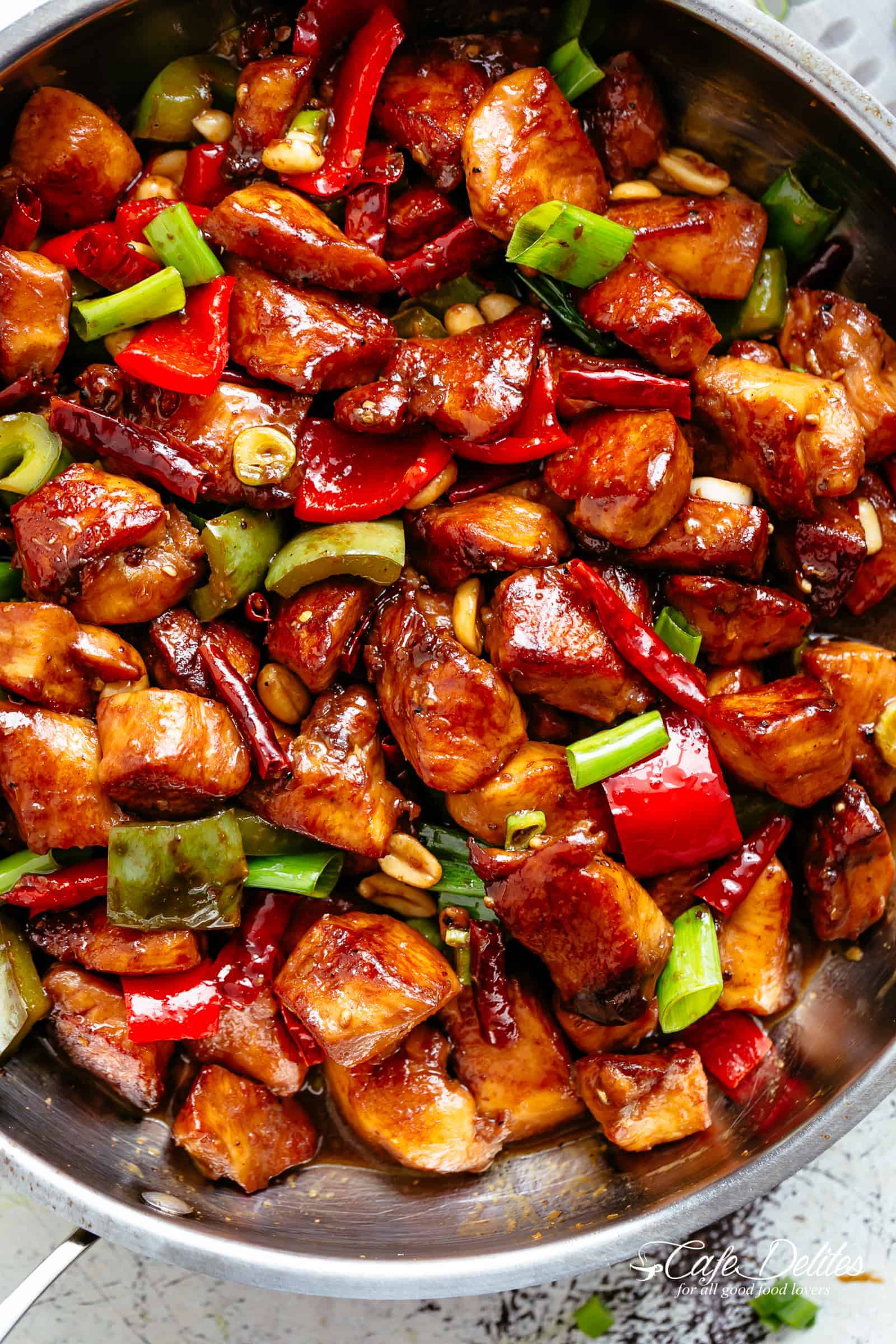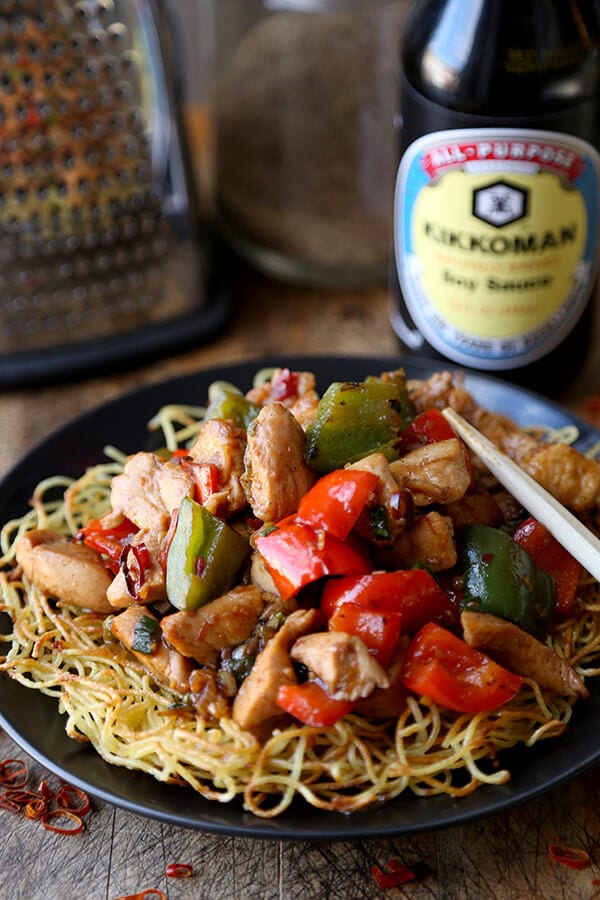
Because you will work with the highest heat, the cooking will be finished in mere minutes. This is the most important step when it comes to stir-frying. I use a 14-inch cast iron wok and a pound of chicken is the most it can handle. The chicken will be cooked in a lukewarm pan and the dish could easily turn out mushy.Īlso, remember not to crowd the wok. Using a wok on an electric stove won’t generate enough heat. The taste of the dish will change but remain delicious. In this case you will pan-fry the chicken instead of stir-fry. If you have an electric stove, use a large skillet with a large contact surface with your stove. The best setup is a gas stove and a cast iron (or carbon steel) wok. To create the best texture and impart a smokiness to the dish, you need to use a wok and cook with high heat. For everyday cooking, skip it, because it is quite time-consuming. If you’re cooking a dish to entertain guests, do this for best results. I did not include this step in the recipe, but Chinese restaurants usually do this prior to the stir-fry to maximize the crispiness of the peanuts.

If you fry the peanuts with a small amount of oil and let them cool completely, they will become extra crispy. Green onion is a prominent ingredient and every single bite should contain some of it.

It adds nice texture and flavor to the chicken. Be generous with aromatics, especially green onion and garlic. Use a moderate amount of sauce, just enough to coat the chicken. Note, if you use a different starch, such as potato starch, you will need to use a bit more (about 3 teaspoons) to get the proper texture. The marinade should be just enough to coat the chicken without forming a pool of liquid in the bowl. The oil prevents the chicken from sticking to the wok during cooking. The cornstarch forms a protective layer so the chicken won’t be in direct contact with the heat and will remain juicy after cooking. The salt in the light soy sauce tenderizes the chicken. To cut tenderloins, remove the tips, divide the tenderloin lengthwise evenly, and then slice crosswise into 1.5-cm (3/4-inch) cubes (see the picture below). Because it is very easy to cut into even squares that are the perfect size for stir-fry, and it yields an even tenderer result. During my experiment, I found chicken tenderloin to be a great option. The real-deal Szechuan version uses exclusively skinless breast, but you can use thighs, as well. The dish is bursting with flavor, yet not too sweet, spicy, or sour. An extremely aromatic sauce coats the ingredients. The vegetables vibrantly colored and crunchy. There are many factors to consider if you want to successfully execute Kung Pao chicken in your own kitchen.
#Authentic kung pao chicken recipe how to
How to create the perfect Kung Pao chicken Now I’m sharing my favorite version with you. I tried recipes from cookbooks by Fuchsia Dunlop and Kian Lam Kho, and learned from many recipes online. The quest for the best Kung Pao chicken recipe was not easy. At the end of the day, it really depends on your own palate. It is difficult to say which version is the best. Yet each restaurant has a different version, sometimes with entirely different flavor profiles. You will find Kung Pao chicken on the menus of many restaurants in China. Learn the technique to recreate the authentic flavor in your own kitchen. Sign up here.Balanced sweet, sour, numbing, spicy, and savory flavors make for the perfect kung pao chicken. Get recipes like this and more in the Munchies Recipes newsletter. Deglaze with the Shaoxing, then stir in the sugar, hoisin, and MSG.

Add the soy sauces and cook until the chicken absorbs the soy sauce color, about 1 minute. Cook until fragrant, 1 minute, then toss in the chicken. Add the chilies and scallion whites cook until fragrant, 1 minute, then toss in the peanuts and garlic. Heat the remaining 3 tablespoons of oil in a large skillet over medium-high.Cook chicken for one minute, then, using a slotted spoon, transfer to a paper towel-lined plate and set aside. Oil needs to be hot to get the searing effect so it doesn’t actually deep fry. NOTE: This might seem like “deep frying” but in Chinese we call it “passing through oil” and it's a way to sear large amounts of protein in a short period of time.

Working in batches, slowly add the chicken and stir and separate the chicken so it doesn’t clump up into one big ball. Heat up 2-inches of oil in a large saucepan until a deep-fry thermometer reads 375☏.The ingredients create a barrier around the protein that allows it to retain moisture. Marinate the chicken: In a large bowl, add and mix the ingredients one at a time in this order: egg white cornstarch salt and pepper 3 tablespoons oil.


 0 kommentar(er)
0 kommentar(er)
